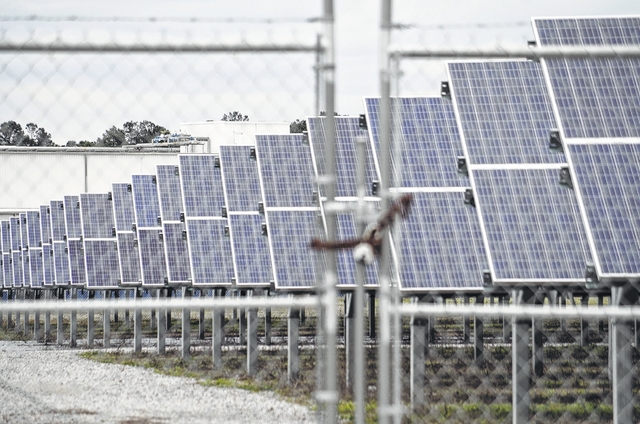LUMBERTON — Robeson County saw the most investments in clean energy from 2007 to 2015 of any county in North Carolina, according to a new report.
Prepared by RTI International for the North Carolina Sustainable Energy Association, the annual Economic Impact Analysis of Clean Energy Development in North Carolina shows that $375,099,063 was invested in clean energy projects in Robeson during the nine years. Statewide, $6.3 billion was invested, with a total economic impact of $12 billion.
According to Maggie Clark, the association’s director of governmental affairs, the investment figure refers to the amount of money that private companies are making in local clean energy projects, most of which is taxable.
“It’s investment in lasting energy infrastructure,” she said.
Robeson County’s booming solar industry accounted for a large portion of the investments. There are currently about two dozen solar farms operating in the county. The Lumberton City Council has lent its approval to four solar farms in the past two years.
Ricky Harris, Robeson County’s manager, said the investments by solar companies in Robeson County have spurred significant economic growth and job creation during the past few years.
“Especially the price of land and land availability is attractive to those wishing to develop solar farms,” Harris said.
Robeson County’s economic and industrial developer, Greg Cummings, said that the county benefits when these investments expand and strengthen the tax base. Solar farms have also become a major source of income for local farmers who sell or lease their land to developers.
“Solar farms have become another source of income for farmers who lost their tobacco allotments and are no longer farming some of their land,” Cummings said.
According to Cummings, solar farm developers are also attracted to Robeson County because the land is open and flat.
“Developers of solar farms don’t like trees,” Cummings said.
Robeson residents, however, have expressed concern at public meetings about potential health-risks associated with solar farms, and some Lumberton city officials have questioned whether land being used for the farms could be put to a more profitable use.
According to the report, 64.5 percent of clean energy investments in Robeson went toward solar, $242,086,096. Another $114,992,402 was for biomass, 30.6 percent of the total investments. The remaining money went toward landfill gas and solar thermal. No investments were made toward hydroelectric in Robeson, a fifth category included in the report.
After Robeson, Duplin County saw the most clean energy investments, with $358 million. Catawba County was No. 3 with $314 million.
Robeson County could become more green in the future if a plan to build 14 new, energy-efficient schools is approved. The firm pitching the plan, sfL+a Architects, is also behind Hoke County’s Sandy Grove Middle School, touted as one of the most energy-efficient institutions in the country. The firm says the 14 new schools would be totally powered by solar energy, meaning no electric bill.

Solar farms in Robeson County helped push the county to No. 1 in terms of clean energy investments in the state. According to a new report, more than $375 million was invested in clean energy in Robeson from 2007 through 2015.







